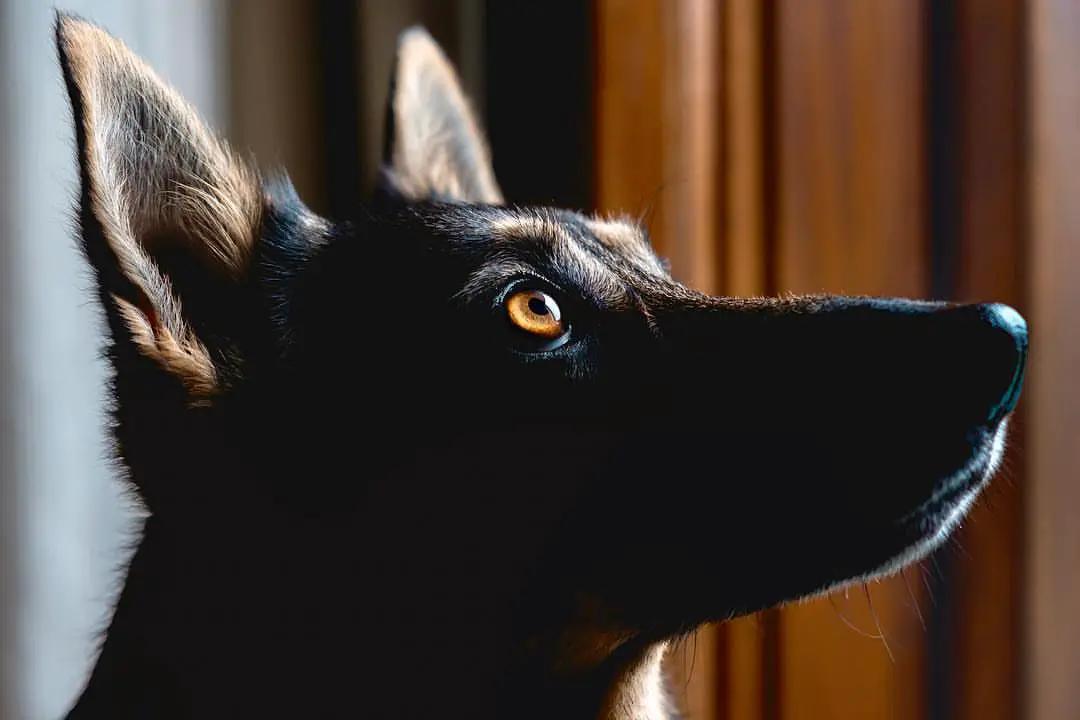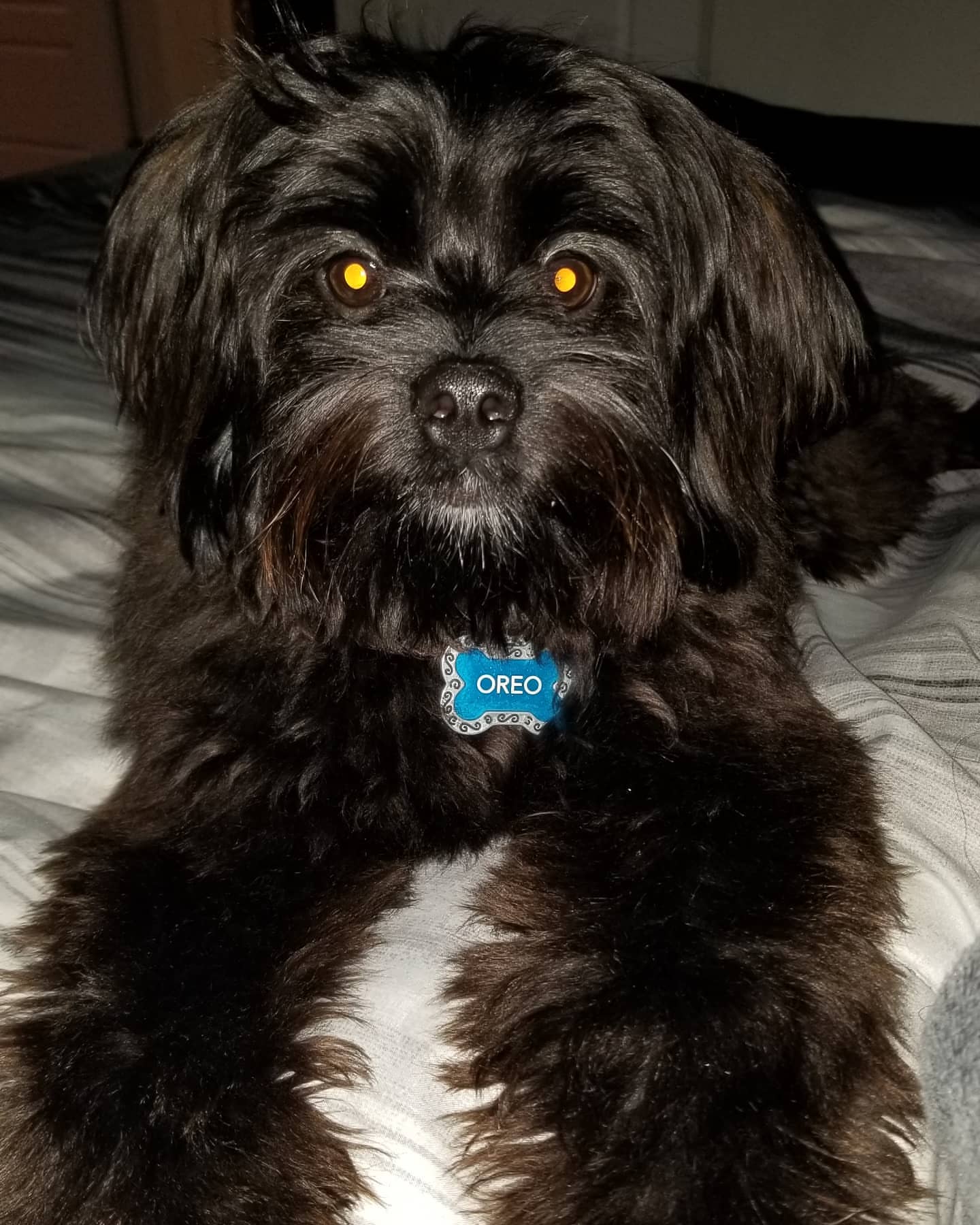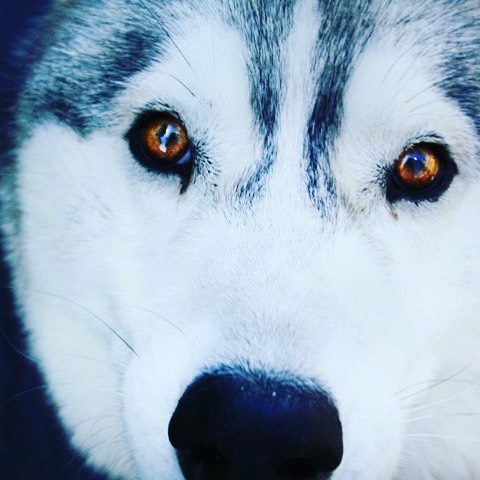Is it Normal my dogs’ eyes glow?
Yes, it is normal for a dog’s eyes to glow in the dark. This phenomenon happens when light reflects off the back of their eyes, called the tapetum lucidum. It also causes cats’ and other animals’ eyes to shine in the darkness. Some dogs will have brighter glows than others due to different eye colors, but it’s a normal occurrence. In fact, this is why dogs can see better than humans in the dark. The tapetum lucidum helps them to see better and be more alert to their surroundings at night. So while it may look strange or spooky, there’s no need to worry if you catch your pup’s eyes shining brightly in the darkness!

Why dog’s eyes glow in the dark?
Because dogs are carnivores, their eyes glow in darkness and reflect light to improve night vision. The tapetum Lucidum, a reflective layer behind the retina and just in front of their optic nerve’s, has been created by dogs’ eyes. The tapetum lucidum reflects light to the retina, giving light-sensitive rods and cones a second chance at picking it up. This is a clever way to recycle or make the most out of the darkness.
Just like a mirror, shine a light into your dog’s eyes, and it will reflect on you. This is only one example of how canine vision differs from ours. Their eyes are larger and can capture more light. They also have rods which are light-sensitive cells. Also, they have fewer cones than we do, so they can see fewer colors.
They even have an additional eyelid called the nictitating skin. All these details mean that keeping your dog eyes clean should be a part of your daily routine. We recommend natural dog wipes to remove any debris or discharge to prevent infection.
You can read our dog eyelids article for more information about a dog’s nictitating skin.
Tapetum lucidum is not common for creatures that are active during the day like us, squirrels, and pigs. Other animals have developed different tapetum surfaces. A crocodile, for example, has a retinal tapetum. Cats and dogs, on the other hand, have choroidal tapetum cellsulosum.
One reason we find the glow of our eyes so frightening and creepy is that carnivores are known for having glowing eyes. Humans know deep down that glowing eyes in darkness can indicate danger.

Can dogs’ eyes glow in different colors?
The eye color and reflective glow depend on the dog’s ocular chemistry. Therefore, even within the same breed, there may be variations in the hue.
Because the tapetum has reflective properties, this is why. Its cells are made up of between 11 to 15 layers of cells that contain zinc cysteine, a metal chelate. Zinc cysteine is the metallic mirror. Different colors glow due to the tapetum’s different ratios and amounts of reflective compounds.
This is not the same as cat’s eyes. The reflective material is riboflavin or a mixture of riboflavin with zinc.
This is why dogs should be able to get sufficient zinc and another sulfur-bearing amino acid in their diet. These are methionine and cysteine, as well as taurine. You can read our taking care of dog’s eyes article to learn more about dog eye health.
You may like: Basenji poodle mix
What color should my dog’s eyes be when they glow?
Surprisingly there is a variety of colors that dogs’ eyes should glow. Many shades can glow, including red, yellow, orange, and orange. Many dogs have a green or blue glow. One eye may glow one color, while the other might glow another. This will be discussed below.
You may have noticed a different color glow if you have ever photographed multiple dogs at once. Another fascinating aspect of eye shine is the influence of dog breeds, coats, and eye color.

Conclusion.
The tapetum Lucidum, a tiny structure that reflects light through the cones and rods of dogs’ eyes, makes their eyes glow. This structure allows the eye to make the most out of light in dark or dim conditions.
This is a common condition in some dogs. However, some dogs will experience reddened eyes when photos are taken because the light reflects off their blood vessels, not the tapetum. For other dogs, however, a photograph taken with a flash should show a greenish, orange, or bluish glow.




